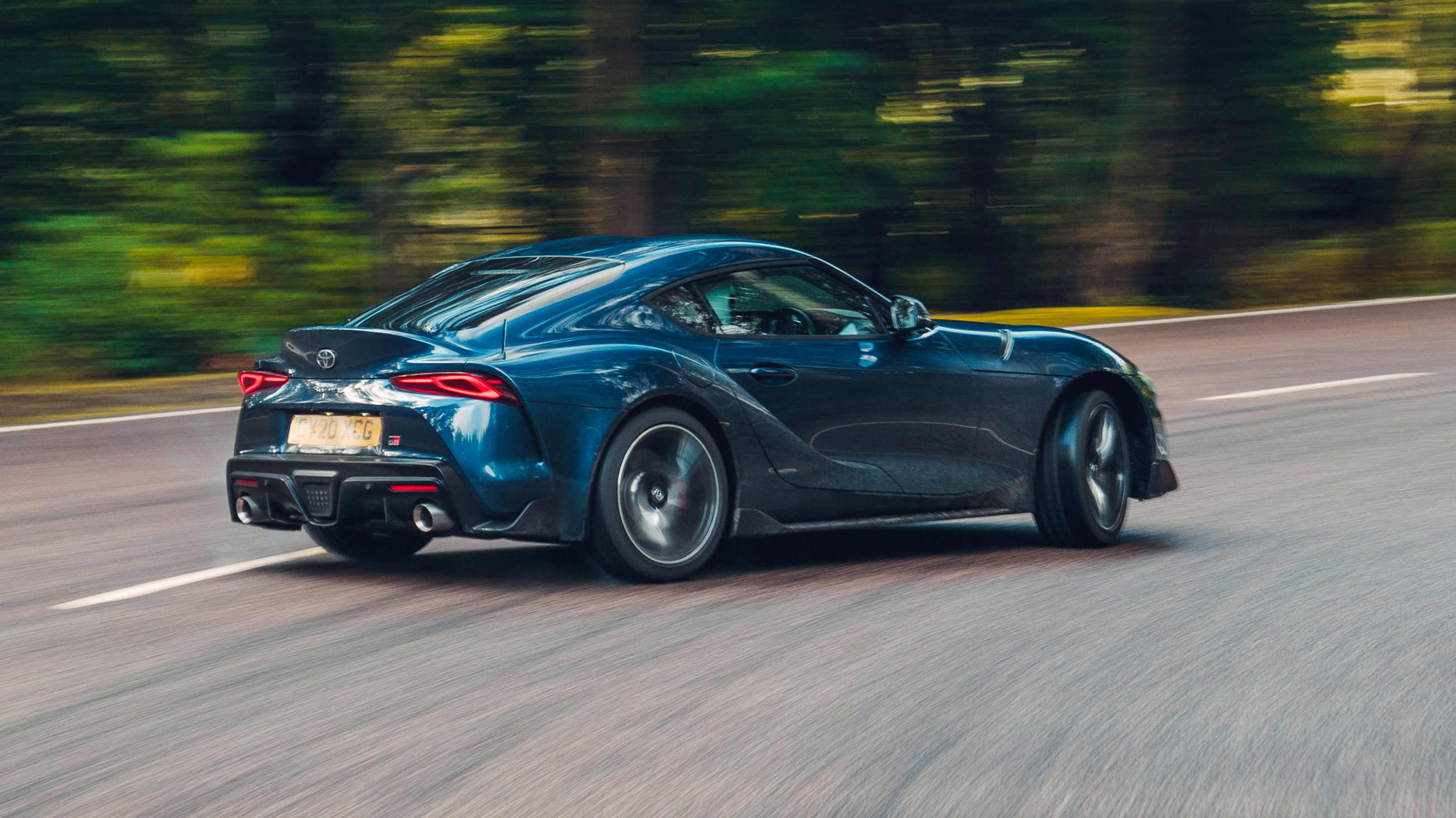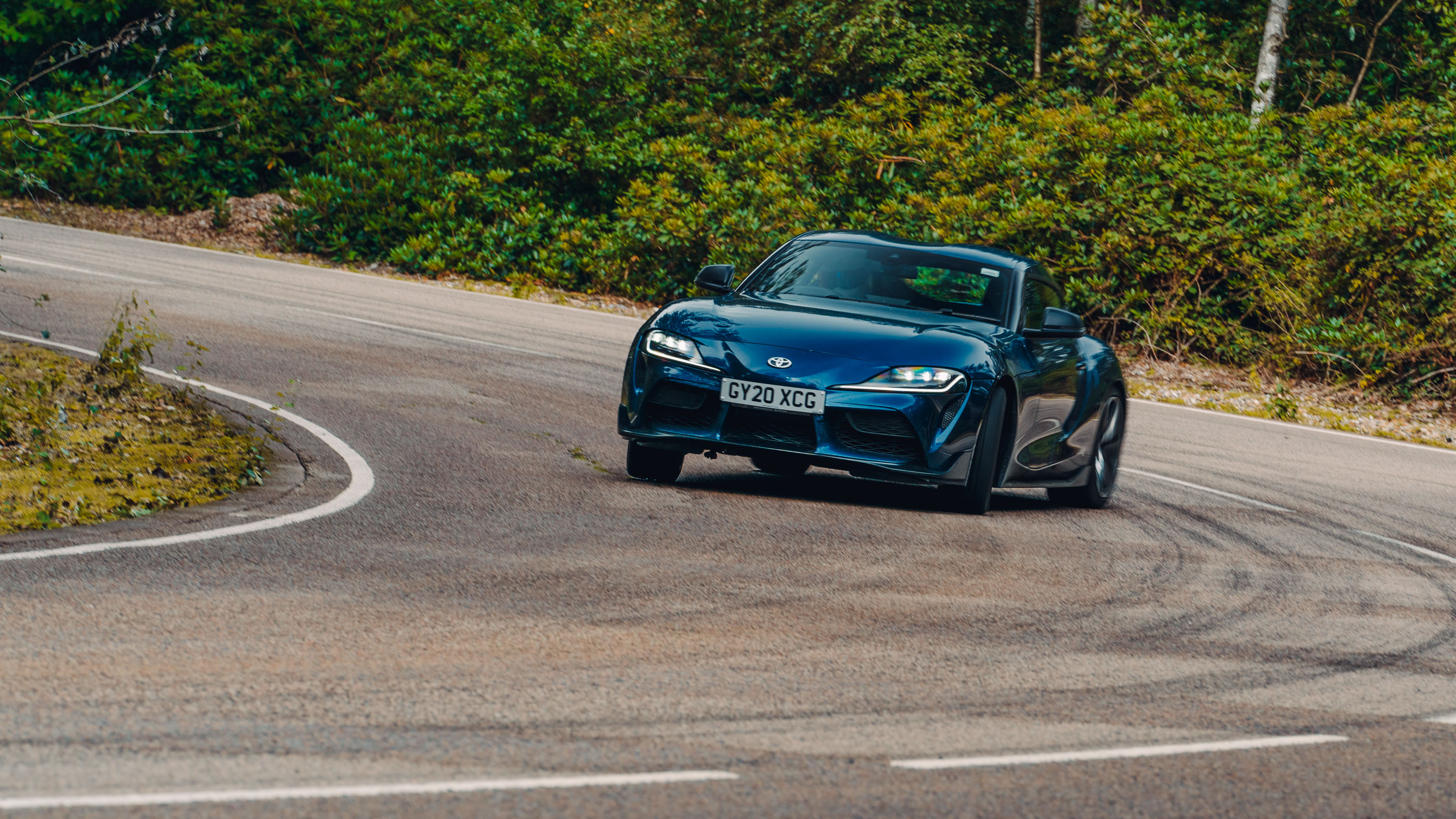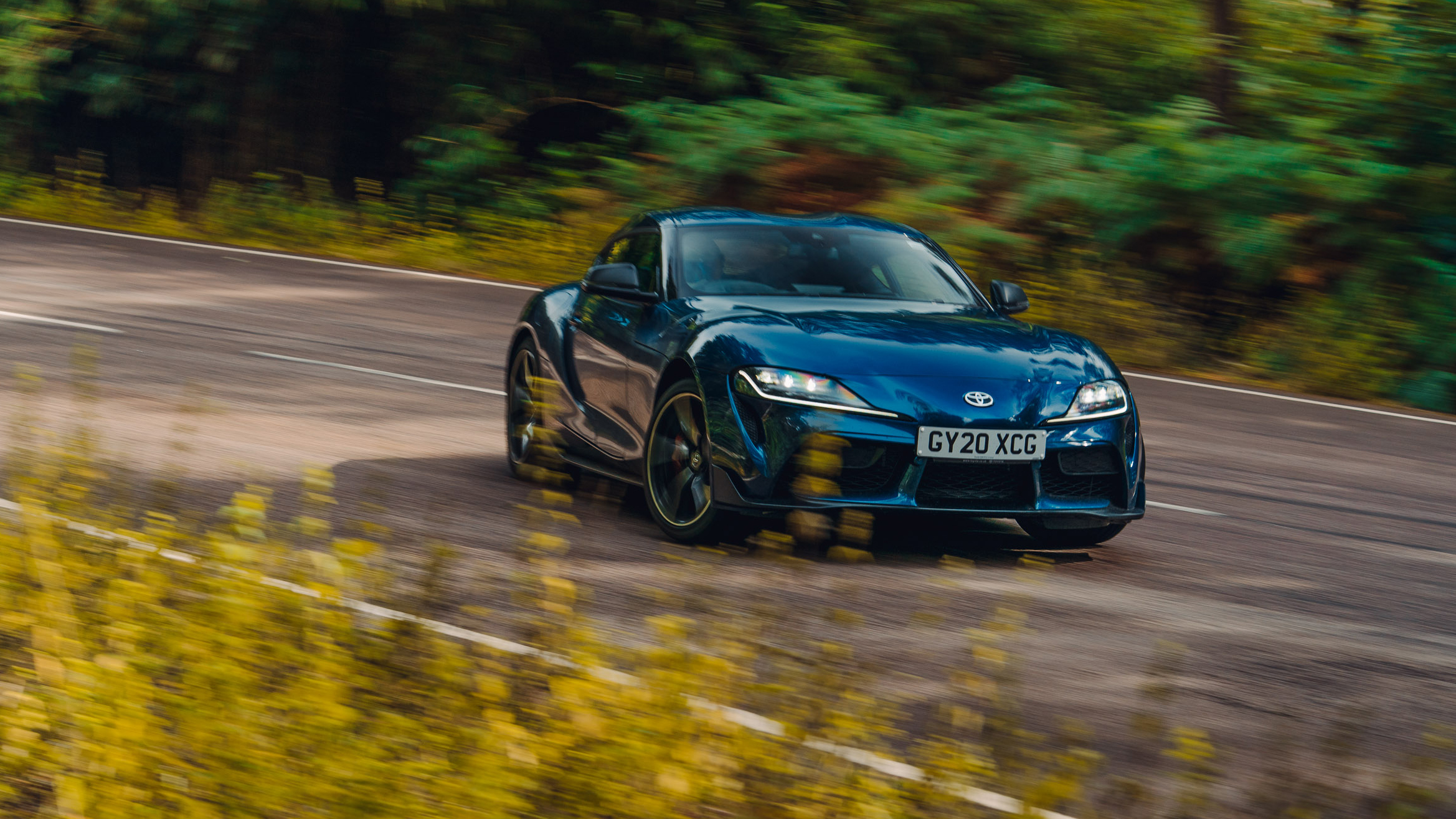
Toyota Supra – long-term review
£54,340 OTR / £55,050 as tested / £504pcm
How good is the new Toyota Supra at going sideways?
A front-engine, rear-wheel-drive Japanese sports car that just so happens to be built in Austria... but for romanticism’s sake, we’ll scoot over that. A long, arcing corner with a consistent radius and decent camber. You know what comes next: big drifts.
Yep, GY20 XCG was recently summoned in front of the cameras for our new video series – ‘Stig Drifts’. Click those blue words and keep your eyes peeled for more of them, they're a goodie. But it also came at the perfect time as I’ve been struggling with the communication of what the front and rear of the car are doing. And nothing brings the true colours of a chassis out like skids.
Don’t get me wrong, the Supra’s steering is responsive and accurate (especially in Sport mode) but you can’t feel what the front end is biting on. And this car does bite. In the dry, it’s really quite astonishing how much grip it has on the Michelin Pilot Sport 4S tyres. You’d think with that engine up front it’d be keen to understeer, but it isn’t. And with 335bhp and 369lb ft of turbocharged torque, most RWD cars would struggle for traction under power. But the Supra just grips and goes. In the wet it’s a different story. Something I’m learning as winter sets in.
But seeing Stig drift it was majestic. A Japanese car sideways on a ‘Touge’ corner fit for Hokkaido just looks right. Especially as the straight-six warble got angrier and angrier, fighting for more shove in the upper rev range. Which you really have to do, as there’s plenty of mid-range punch from the 3.0-litre, but beyond 5,500rpm the engine loses fizz. And with a short 2,470mm wheelbase, it can be tricky to settle into a slide. But once it’s at a big angle it’s happy and controllable. Well, that’s what Stig’s OB port said. So the Supra can skid. Good news. But let’s be honest, if it didn’t, we’d be very disappointed.
Featured

Trending this week
- Car Review
BMW 1 Series
- Top Gear's Top 9
Nine dreadful bits of 'homeware' made by carmakers






